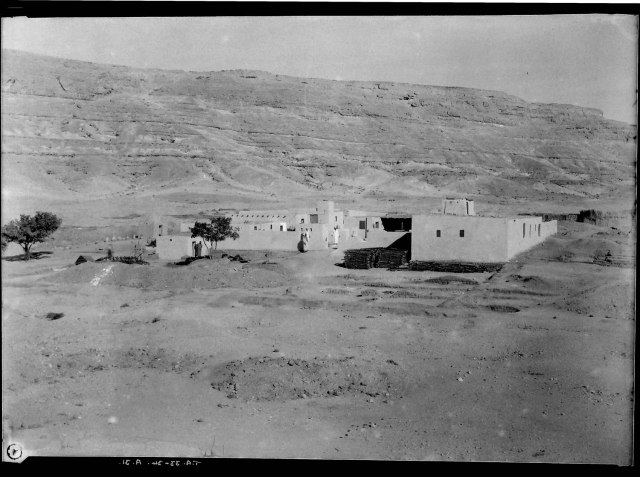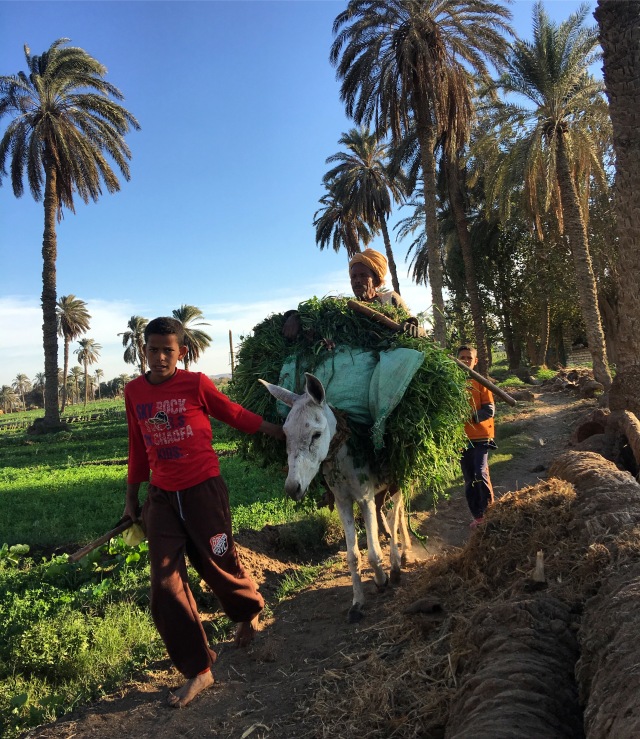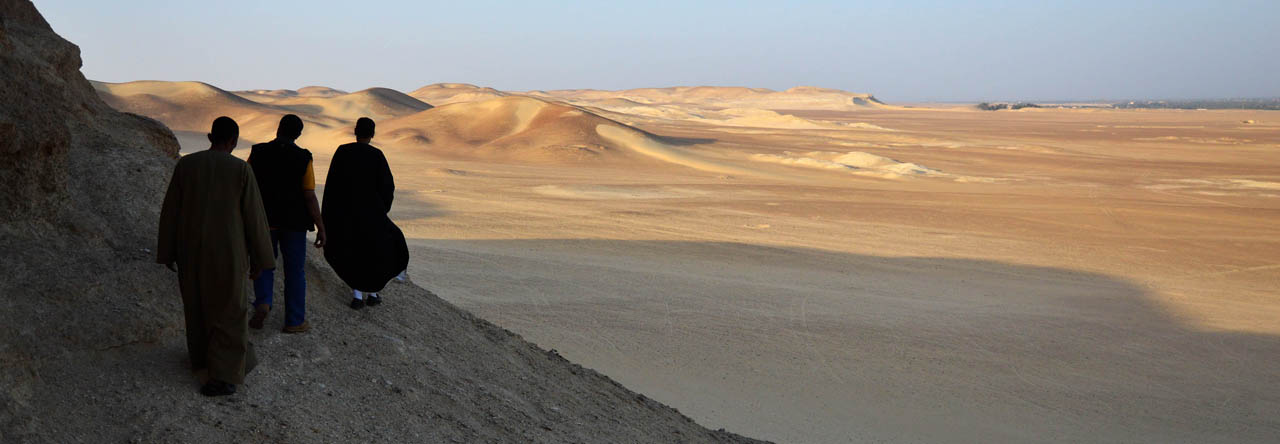Last week I spent two absolutely wonderful days at Tell el-Amarna. I was looking forward to visiting, but I’d been a couple of time before and didn’t think much of it. Been there done that, know it all already… But it made a much bigger impression on me this time round.
One place, so many stories
Amarna was and is the capital city founded by Akhenaten and Nefertiti, and the setting, therefore, for one of the great stories of the ancient past. That city, Akhetaten, as Akhenaten called it, was also a place where a lot of ordinary people lived – and worked, played, loved, met, talked, argued, got sick, got well again, died, were buried, and did all the other things people do – together, in this one place. It’s also set in an extraordinarily beautiful, archetypally Nile Valley landscape: the broad river with lush green fields punctuated by palm trees at its edge, then a crescent of desert plain bounded at its eastern extent by a glorious arc of cliffs that marks the edge of the valley and the beginning of the high desert nothingness beyond.
 Satellite image of the site showing the essences of the geography at Amarna: the river and, to the east, the cultivation, low desert plain, great arc of cliffs, high desert beyond.
Satellite image of the site showing the essences of the geography at Amarna: the river and, to the east, the cultivation, low desert plain, great arc of cliffs, high desert beyond.

Map of the ancient city taken from the Amarna Project website (here). The photograph below was taken in the area of the North Palace

The view from the ground: looking towards the camera, ready to do some walking shots through the cultivation with the cliffs in the background
The site is also home to the people of the modern village of Et-Till Beni Amra whose name was corrupted and became ‘Tell el-Amarna’ the name we know the site best by today. Further to the south of Et-Till are the villages of El-Hagg Qandil, El-Amariya and El-Hawata esh-Sharqiya (or El-Hawata).
People lived here in the time of Akhenaten, and people live here now.
I was there to help make a documentary with a crew, Nick and Lina, from Blink Films and with our expert contributor, Dr Anna Stevens. We filmed at the north cemetery, the Workmen’s Village, and two unfeasibly lovely riverside locations; we ate two delicious and very Egyptian lunches at the local resthouse; and we drove and hiked around the site inbetween times, all the while getting the benefit of Anna’s expert knowledge and guidance.
Travelling through the site
Entering the site from the main road leading into the nearby town of Mallawi you immediately know you have arrived somewhere. Heading south along a newly tarmacked road, the fields and, beyond, the river are on your right; the desert is to your left, the cliffs beyond getting further away as the great crescent-shaped desert plain opens out towards the east. The arrangement seems almost too good to be truly natural. You can see exactly why Akhenaten chose this new place to be his capital, you just wonder why no-one had had the idea before him…
One of the first buildings you see on the desert is the ancient house which was rebuilt by the Egypt Exploration Society’s team in the 1920s for use as a base during their excavations, most famously those led by John Pendlebury and co from the beginning of the 1930s.

Lina and Nick in front of the EES house of the 1920s and 30s

The EES house while it was still in use. Photograph taken during the 1933-4 season at the site, reproduced courtesy of the Egypt Exploration Society.
Very close by is the North Riverside Palace which may well have been the main residence of the royal family in Akhenaten’s time. From here, after a while, the new road comes to coincide with the ancient royal road. As we drove, Anna, let us know when we had reached the Central City, where Akhenaten built his Great Palace, the Great and Small Aten Temples and various administrative buildings, the ruins of which lie all around. Remembering undergraduate lectures I asked if we were about to see the bridge across the street which some have speculated may have included a ‘window of appearance’ for the royal couple to present themselves to their people – just at the moment when we passed that exact spot. Being somewhere familiar without ever having been there before, it’s like meeting someone famous…
The ruins sit in and around clusters of modern houses, cultivated land, a cemetery – all the elements you would expect of any settled area, and all of which are expanding rapidly in an easterly direction across the desert, eating into, and destroying, the remains of the ancient city. It’s sad from an archaeological perspective, but people need houses to live in, fields on which to grow their crops, and somewhere to bury their dead.

It was such a privilege to be able to film in these beautiful fields with the generous permission of the locals who, unfussed, carried on with their work around us
People and their stories
Amarna is all about people – ancient and modern – and their stories. The site helps us to tell the tale of Akhenaten and Nefertiti, but the current Amarna Project has focused more on the unrivalled opportunity it presents to study a fully-fledged, purpose-built city at a very precise moment in time: Akhetaten came into being in just a few years, according to Akhenaten’s very deliberate plan; and it was abandoned again almost as quickly after the end of his reign, as part of the transition back to the old ways. Crucially, the desert plain on which the city was built was never reoccupied to anything like the same extent, and the remains of the city simply lay there largely undisturbed beneath a thin layer of drift sand for a few thousand years until explorers and scholars began to take an interest in the beginning of the 19th century. Along with literally thousands of buildings and material objects the city also provides the opportunity to study the people who built the whole thing, and made it work.

Lina and Nick capture Anna’s arrival at the Workmen’s Village where the craftsmen who cut the elite tombs at Amarna lived
For many years, although the richly decorated rock-cut tombs of the Amarna elite were well known, the cemeteries of the ordinary people lay undiscovered. This changed in recent years with the discovery of what have become known as the south and north cemeteries.

Anna explains a little of what we can learn of the ordinary people of Amarna at the North Cemetery
Anna was with the crew and me in part to tell the story of the excavation of these crucially important burial grounds which began in 2006. During a first visit to the north cemetery for a reccy, she told us how privileged she felt to have the opportunity to excavate the graves of the people of Akhetaten. The very human connection she feels with the ancients was clear, and it now seems obvious having spoken to Anna just how incredible it is to be able to get to know something of these people’s lives, and how each came to an end, often at very young ages, perhaps after some suffering from illness or over-work, from the careful recording and interpretation of their graves and remains.
Thinking about the people – who, though far removed from us in terms of time, geography, beliefs etc., were nonetheless people just as we are – set me thinking about the city in quite a different way, made it feel a little closer, a little more alive. It’s difficult not to see a connection between this and the friendly relations Anna has with so many of the people, villagers, dig-house staff, antiquities inspectors, police, and guardians who live and work at Amarna now.
Amarna under threat
Some many lives intertwined… People, ancient and modern, locals and foreigners… City, villages and landscape. It’s such a special place, one of Egypt’s great places, one of the world’s great places. And yet the archeological site is disappearing as the locals have no choice but to make use of it for their own needs. The local Ministry of Antiquities inspectorate and Amarna Project are desperately under-funded, despite the celebrity of Akhenaten and Nefertiti. A single fragment of a statue of the period was due to be sold at auction recently for $600,000; an entire season of excavation and conservation work costs a tiny fraction of that and yet the Project struggles to find the funds it needs, relying on small grants and crowd-funding. Listening to Anna, with all her knowledge expertise, energy and passion, and seeing the excellent relations she has with friends and colleagues all around her, one can be hopeful that in future the ancient city will be preserved in its (still, largely) unspoilt desert landscape, and that the modern inhabitants will be able to able to live good lives in and around it without threatening that. But it’s by no means assured.

Satellite image of the Central City at Amarna (click here to view the area in Google Maps). The massive rectangular enclosure of the Great Aten temple has recently been built over by the buildings of a modern cemetery (small rectangular shapes towards the top of the image). The dark green cultivated areas at its north-eastern corner demonstrate the extent to which the desert can be reclaimed for agriculture, threatening to envelope the temple completely.
I wanted to write something to share my excitement at waking up to these stories – of the ancient people, their modern counterparts, and the incredible work (Project Director) Professor Barry Kemp, Anna and their colleagues are doing – but also to say something about the urgent need for us not to be complacent about this wonderful place. Please read more about the site and the Project (here), and please consider supporting it if you can (here).
